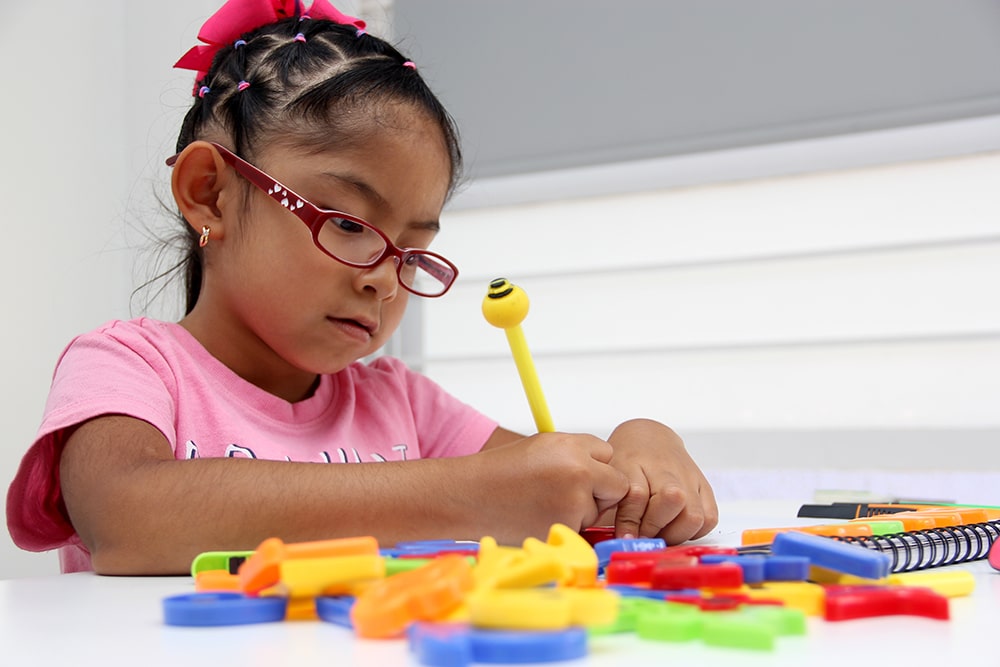It’s no secret that the U.S. healthcare system is riddled with disparities. In addition to insurance dictating what services can and cannot be accessed, certain racial and ethnic groups are less likely to have proper access to health resources, and rural and low-income communities typically have fewer health care professionals per capita than urban and high-income areas. Those disparities can become even more obvious when specialty healthcare is needed.
A $2.9 million R01 grant from the National Institutes of Health—of which Olivia Lindly, assistant professor in the Department of Health Sciences at Northern Arizona University, is a principal investigator—will help bring to light these inequities. With the help of co-investigators David Folch, associate professor in NAU’s Department of Geography, Planning, and Recreation, and Toby Hocking, assistant professor in NAU’s School of Informatics, Computing, and Cyber Systems, Lindly will lead a groundbreaking research project aimed at addressing the persistent racial and ethnic disparities in access to autism services for U.S. children enrolled in Medicaid, the public insurance program for individuals with low income and/or high medical needs in the United States.
The catalyst for this research stems from evidence that indicates inequities in access to critical autism services, such as behavioral therapy, for children who are Latino, Black or American Indian and Alaska Native. Access to these services plays a crucial role in improving the health and quality of life of autistic children and their families.
“Disparities in access to autism services are unique,” said Lindly, who has been researching child health services for more than a decade and started her career delivering behavioral services to young children, including those with autism, in early intervention programs. “A stronger understanding of autism disparities specifically is needed because autism is unique among developmental conditions—creating distinct challenges in service access. Unlike other early childhood developmental conditions, like Down syndrome and cerebral palsy, autism cannot be consistently identified in infancy by laboratory tests or imaging. Instead, early signs of autism, such as issues with social communication or repetitive behavior, are challenging to identify for families and providers, leading to diagnostic and treatment delays.”
Lindly said that although autism is highly prevalent in the U.S., affecting an estimated one in 36 children, it can be difficult to identify Most American children don’t receive an autism diagnosis until the age of 4 or older. Better access to autism services is therefore crucial for families learning to navigate this developmental disability.
The community-engaged research, drawing on the expertise of autistic adults and parents of autistic children serving as advisors, will take place over four years and span three phases. The study will be grounded in the World Health Organization’s Commission on Social Determinants of Health framework and the Bronfenbrenner Social Ecological Model. The project’s aims are:
- Aim 1: Harmonize multi-level, cross-sector data from various sources, including Medicaid claims, Child Opportunity Index 3.0 indicators, state educational data and health system and policy data.
- Aim 2: Apply novel data science methods to determine disparities in Autism service access and identify modifiable determinants.
- Aim 3: Utilize implementation science consensus methods to establish feasible solutions based on key findings, advancing equity in autism service access for children of color.
The idea behind the study, Lindly said, is to fill critical gaps in the existing research base by providing a comprehensive and process-oriented analysis of autism disparities for children enrolled in Medicaid. She stressed the need to consider multiple process steps and structural and social determinants of health holistically to understand and address barriers to care.
The research team, which includes Dr. Katie Zuckerman and John McConnell at Oregon Health & Science University, plans to integrate recent and comprehensive child-level Medicaid claims data with various other key data sources, including community-level structural racism and discrimination data from the Child Opportunity Index 3.0. This approach will offer a multi-level understanding of autism disparities, accounting for children’s intersecting identities and contextual factors.
“This will be the first study to harmonize Big Data across multiple social-ecological levels to cohesively identify drivers of persistent racial and ethnic autism disparities for children enrolled in Medicaid,” Lindly said.
The research team is hopeful that the study’s impact could extend beyond academia, informing multi-level strategies, programs and policies to improve autism service access for Latino, African American and American Indian and Alaska Native communities.
Carly Banks | NAU Communications
(928) 523-5582 | carly.banks@nau.edu




